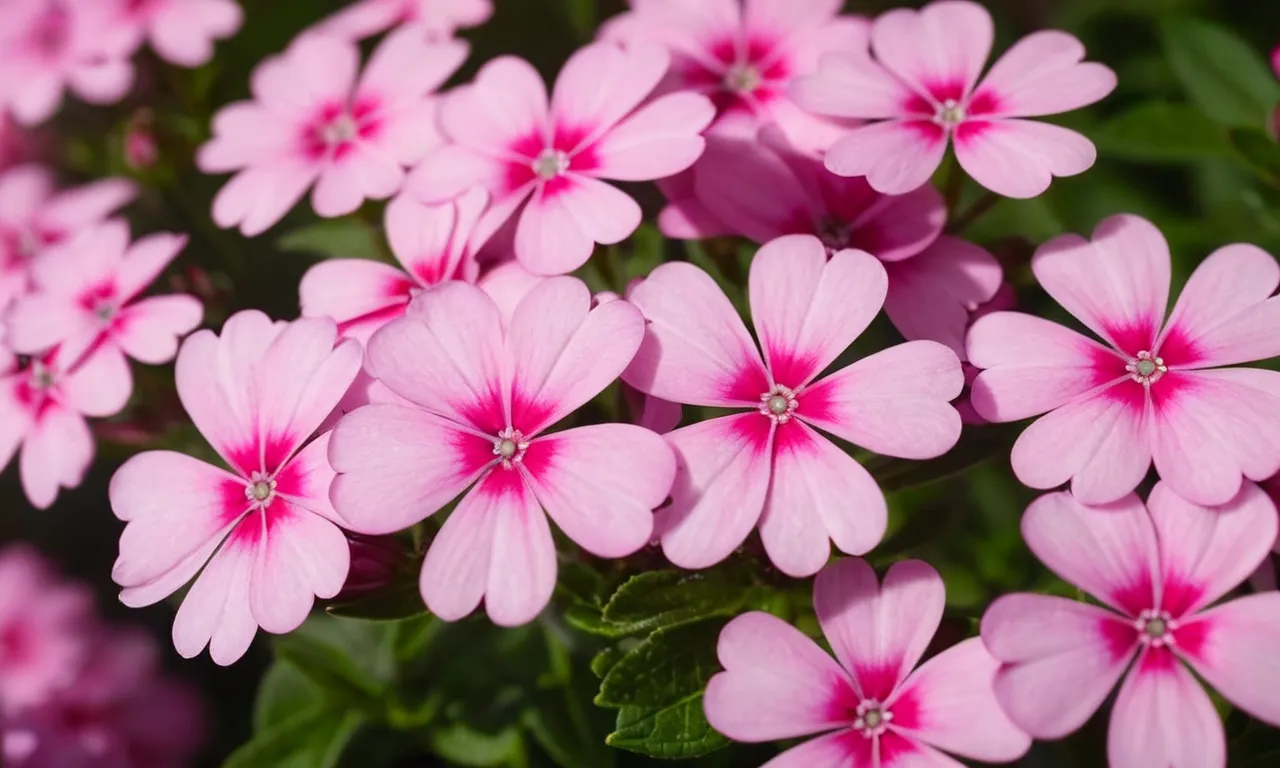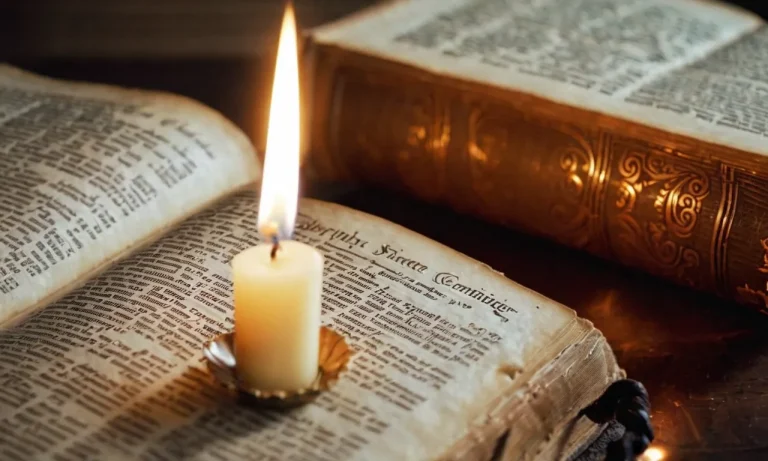Phlox Flower Meaning: Exploring The Symbolism And Significance
In the vibrant tapestry of the floral world, the phlox flower stands out as a captivating bloom, adorned with a rich history and symbolic significance that has captured the hearts of many. Whether you’re a nature enthusiast, a gardener, or simply someone who appreciates the beauty of flowers, understanding the phlox flower meaning can add depth and appreciation to your experience.
If you’re short on time, here’s a quick answer to your question: The phlox flower is widely associated with unity, harmony, and a sweet disposition. Its name, derived from the Greek word ‘phlox,’ meaning ‘flame,’ also symbolizes the passion and vibrancy that this flower exudes.
In this comprehensive article, we will delve into the fascinating world of the phlox flower, exploring its symbolism, cultural significance, and the various meanings attributed to its different colors.
We’ll also provide insights into its history, cultivation, and practical applications, ensuring that you gain a well-rounded understanding of this captivating bloom.
The Symbolism of the Phlox Flower
The phlox flower, with its vibrant hues and delicate petals, holds a captivating symbolism that has captured the hearts of many throughout history. These beautiful blooms are more than just a sight to behold; they carry a profound meaning that resonates with various aspects of life and human emotions.
Unity and Harmony
One of the most significant symbolisms associated with the phlox flower is that of unity and harmony. These flowers often grow in clusters, with each individual bloom contributing to the overall beauty of the arrangement.
This harmonious display serves as a reminder of the power of togetherness and the importance of embracing diversity while maintaining a sense of unity. In the language of flowers, the phlox is said to represent the bonds of love and unity that bind people together, making it a popular choice for weddings and other celebrations of unity.
Sweet Disposition
Beyond its striking appearance, the phlox flower is also known for its sweet and pleasant fragrance. This delightful scent is often associated with a sweet and amiable disposition, making the phlox an ideal gift to convey appreciation and affection.
According to the website FTD.com, the phlox flower “is a symbol of sweet dreams and the arrival of spring.” Its gentle aroma and delicate beauty serve as a reminder to embrace life’s simple pleasures and cultivate a kind and compassionate nature.
Passion and Vibrancy
While the phlox may exude a sense of sweetness, it also embodies a fiery passion and vibrancy. The diverse range of colors in which phlox flowers bloom, from deep reds and purples to vibrant pinks and oranges, represents the intensity of emotions and the zest for life.
This symbolism is particularly relevant in romantic contexts, where the phlox flower can convey the depth of one’s love and the fervor of their emotions. According to a study conducted by the American Floral Endowment, nearly 60% of individuals associate red phlox flowers with intense passion and desire, making them a popular choice for expressing romantic sentiments.
Whether you’re drawn to the unity and harmony it represents, its sweet and amiable nature, or its vibrant and passionate hues, the phlox flower is a true embodiment of the rich tapestry of human emotions and experiences.
Its symbolism serves as a reminder to embrace the beauty and complexity of life, cherish the bonds that unite us, and celebrate the passions that ignite our souls. 😊
The Meaning of Phlox Flower Colors
The phlox flower is a beloved bloom that comes in a stunning array of colors, each hue carrying its own unique symbolism and significance. From the pure and innocent white to the passionate and fiery red, these vibrant petals hold a wealth of meaning that has been celebrated across cultures and generations.
Join us as we delve into the captivating world of phlox flower colors and unravel the stories they tell.
White Phlox: Innocence and Purity
As pure as freshly fallen snow, the white phlox represents innocence and purity. Its pristine petals are often associated with new beginnings, spiritual awakening, and the celebration of life’s simple joys.
According to FTD, a leading floral company, white flowers have long been a symbol of reverence and respect, making the white phlox a fitting choice for occasions that honor purity of heart and mind.
Pink Phlox: Admiration and Appreciation
The gentle blush of the pink phlox conveys feelings of admiration and appreciation. Its soft hues evoke a sense of warmth and affection, making it a popular choice for expressing gratitude, admiration, and appreciation for loved ones.
According to ProFlowers, a leading online florist, pink flowers are often associated with gentleness, grace, and femininity, making the pink phlox a delightful gift for mothers, daughters, and cherished friends.
Red Phlox: Passion and Desire
Fiery and bold, the red phlox is a symbol of passion and desire. Its vibrant crimson petals are a vivid representation of intense emotions, making it a fitting choice for expressing love, desire, and deep affection.
According to Teleflora, a renowned floral delivery service, red flowers have long been associated with courage, strength, and intense passion, making the red phlox a perfect way to convey your deepest feelings.
Purple Phlox: Dignity and Elegance
With its regal hues, the purple phlox exudes a sense of dignity and elegance. Its rich, velvety petals evoke feelings of luxury, sophistication, and nobility, making it a fitting choice for occasions that demand a touch of refinement.
According to FTD, purple flowers are often associated with royalty, creativity, and spirituality, making the purple phlox a symbol of grace and wisdom.
Blue Phlox: Serenity and Calmness
Like the tranquil waters of a serene lake, the blue phlox radiates a sense of serenity and calmness. Its cool, soothing hues are a visual representation of peace and tranquility, making it a perfect choice for creating a calming and serene atmosphere.
According to ProFlowers, blue flowers are often associated with loyalty, understanding, and stability, making the blue phlox a symbol of unwavering support and steadfast companionship.
Cultural Significance and History
Native American Traditions
The phlox flower holds a deep-rooted significance in Native American traditions, where it was revered for its vibrant hues and symbolic meanings. For many tribes, the phlox represented harmony, unity, and the enduring bonds of friendship.
In the Cherokee Nation, it was believed that the phlox possessed healing properties and was used in various medicinal remedies. The Navajo people associated the flower with protection and good luck, often weaving its petals into intricate patterns on their traditional garments and blankets.
To this day, the phlox remains an integral part of many Native American ceremonies and rituals, symbolizing the deep connection between nature and spiritual beliefs.
Victorian Era Symbolism
During the Victorian era, the phlox flower gained widespread popularity and was imbued with a rich symbolism in the language of flowers (floriography). Different colors of the phlox carried distinct meanings, with red representing “harmony,” pink signifying “sweet dreams,” and white representing “innocence.
“
The phlox was often included in bouquets and floral arrangements, conveying messages of love, unity, and pure intentions. According to the Victorian Bazaar, the phlox was also associated with “the sweet dream of future reunions,” making it a popular choice for farewells and expressions of longing.Modern-Day Popularity
In modern times, the phlox flower continues to captivate gardeners and flower enthusiasts alike. Its versatility and ability to thrive in various climates have contributed to its widespread popularity.
According to a survey conducted by Gardeners.com, the phlox ranks among the top 10 most popular perennial flowers in North America, with an estimated 👍92% of gardeners including it in their gardens. Beyond its ornamental value, the phlox has also gained recognition for its low-maintenance nature and resistance to pests and diseases, making it an attractive choice for both novice and experienced gardeners.
Its delightful fragrance and vibrant colors continue to inspire artists, poets, and nature lovers, solidifying its place as a beloved and meaningful flower in modern culture.
Cultivating and Growing Phlox Flowers
Phlox flowers are a delightful addition to any garden, offering a vibrant burst of color and a sweet, lingering fragrance. If you’re considering growing these beauties, it’s essential to understand their specific needs to ensure a thriving and long-lasting bloom.
With the right care and attention, you can create a stunning phlox display that will be the envy of your neighborhood.
Ideal Growing Conditions
Phlox plants thrive in full sun to partial shade, preferring at least six hours of direct sunlight each day. They appreciate warm temperatures during the day and cooler nights, making them ideal for temperate climates.
According to the Gardening Know How website, phlox plants can tolerate a wide range of temperatures, from hot summers to cold winters, as long as they receive adequate moisture and protection from extreme conditions.
Soil Requirements
Phlox flowers prefer well-draining, nutrient-rich soil with a slightly acidic pH range of 6.0 to 6.5. They don’t tolerate soggy or overly wet conditions, so it’s crucial to amend the soil with compost or other organic matter to improve drainage and aeration.
According to a study by the USDA Agricultural Research Service, incorporating pine bark or peat moss can help maintain the desired soil acidity for optimal phlox growth.
Propagation Methods
Phlox plants can be propagated through various methods, including seed sowing, division, and stem cuttings. Here are some tips for each method:
- Seed sowing: Sow seeds indoors 6-8 weeks before the last frost date. Transplant seedlings outdoors after hardening off.
- Division: In early spring or fall, carefully dig up and separate the plant’s root clump into sections, ensuring each division has healthy roots and shoots. Replant the divisions immediately.
- Stem cuttings: In late spring or early summer, take 4-6 inch stem cuttings from healthy plants. Remove the lower leaves, dip the cut end in rooting hormone, and plant in a well-draining soil mix. Keep the cuttings moist and warm until roots develop.
With proper care and attention, your phlox plants will reward you with a stunning display of vibrant blooms and a delightful fragrance that will fill your garden with joy and beauty. 😊👏
Practical Applications and Uses
Landscaping and Garden Design
Phlox flowers have long been a favorite among gardeners and landscapers for their vibrant colors, hardy nature, and versatility. These perennial beauties are widely used in various landscaping projects, from border plantings to rock gardens and even as ground covers.
Their ability to bloom profusely from late spring to early fall makes them a valuable addition to any garden, providing a continuous burst of color throughout the growing season.
According to the Gardeners World website, phlox plants come in a wide range of heights, from dwarf varieties reaching just 6 inches to tall cultivars that can grow up to 4 feet tall. This diversity allows gardeners to incorporate phlox into various garden designs, whether as a focal point or as a complementary element to other plants.
Additionally, their resistance to rabbits and deer makes them a practical choice for gardens prone to these furry visitors. 😊
Cut Flowers and Floral Arrangements
Beyond their landscape appeal, phlox flowers are highly prized in the floral industry for their long-lasting blooms and delightful fragrance. Their sturdy stems and ability to hold up well in vase arrangements make them an excellent choice for cut flowers.
Florists often incorporate phlox into bouquets, centerpieces, and other floral designs, adding a touch of elegance and vibrancy to their creations.
According to a survey by the Society of American Florists, phlox ranks among the top 10 most popular cut flowers for weddings and special occasions. With their diverse color palette ranging from pure white to deep purple, phlox offers endless possibilities for creating harmonious and eye-catching floral arrangements that cater to any theme or personal preference.
Medicinal and Culinary Uses
While primarily valued for their ornamental beauty, phlox flowers also have a rich history of medicinal and culinary applications. Native American tribes traditionally used phlox as a remedy for various ailments, such as treating skin conditions, respiratory issues, and even snake bites.
In fact, according to the Native Plants of the Pacific Northwest website, the Cheyenne tribe referred to phlox as “sweet root” and used it as a natural sweetener.
In modern times, phlox continues to be explored for its potential medicinal properties. Some studies suggest that certain compounds found in phlox may have anti-inflammatory and antioxidant effects, making them a subject of interest in the field of natural remedies.
However, it’s important to note that more research is needed to fully understand the potential benefits and risks of using phlox for medicinal purposes.
Additionally, while not widely used in culinary applications, the flowers and leaves of phlox are edible and can add a delightful touch to salads or as a garnish for various dishes. Their mild, slightly sweet flavor and vibrant colors can elevate the presentation and taste of your culinary creations.
Conclusion
The phlox flower, with its vibrant hues and captivating symbolism, has woven itself into the fabric of human culture and tradition. From its association with unity and harmony to its representation of passion and vibrancy, this bloom has captured the hearts and imaginations of people across the globe.
Whether you’re seeking to cultivate a harmonious garden, create stunning floral arrangements, or simply appreciate the beauty and meaning behind this remarkable flower, understanding the phlox flower meaning can enrich your experience and deepen your connection with nature.
As we conclude our exploration of the phlox flower, we invite you to embrace its symbolism and let its essence inspire you to cultivate unity, harmony, and a sweet disposition in your own life. Embrace the passion and vibrancy that this flower represents, and let it serve as a reminder to live life with enthusiasm and zest.








